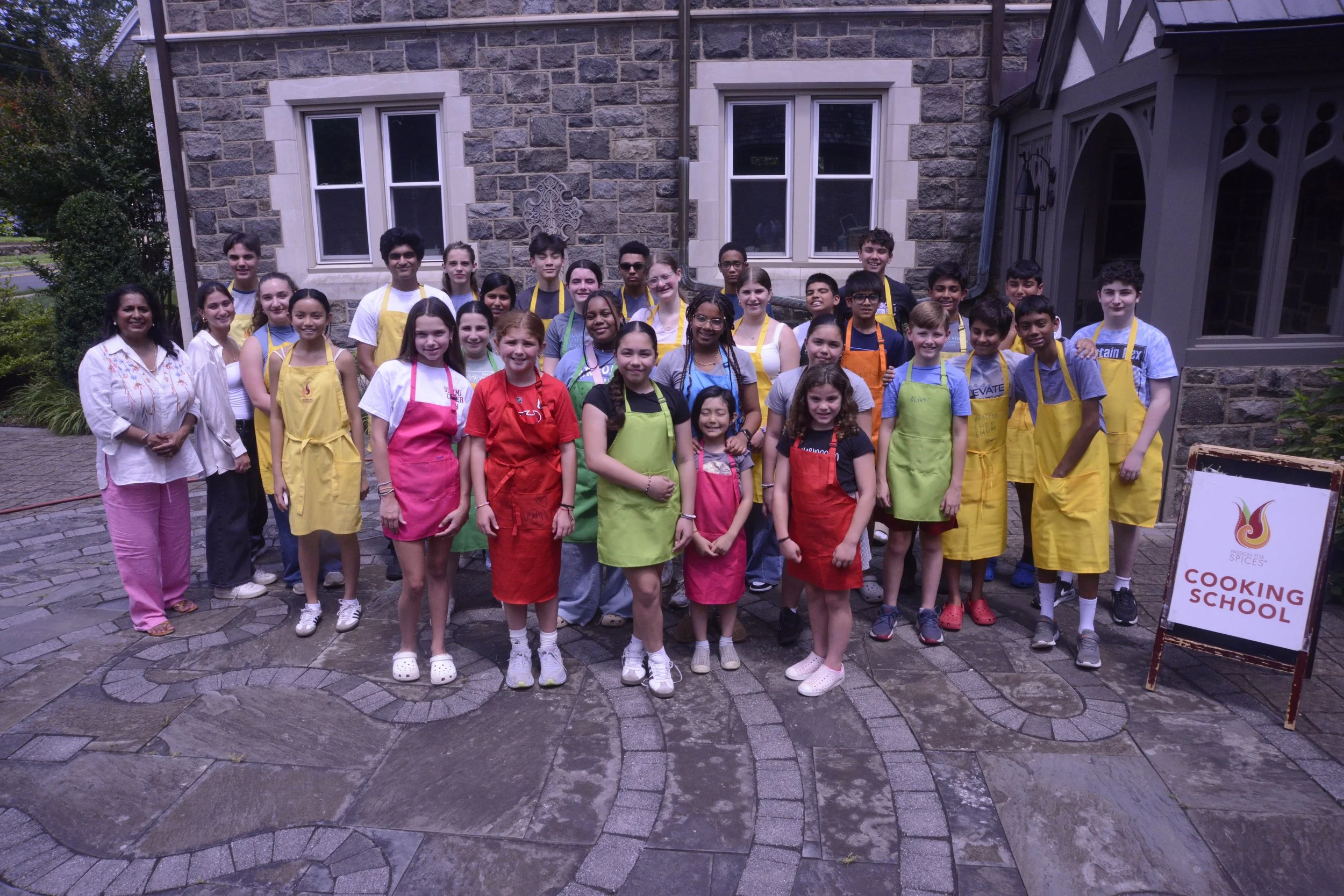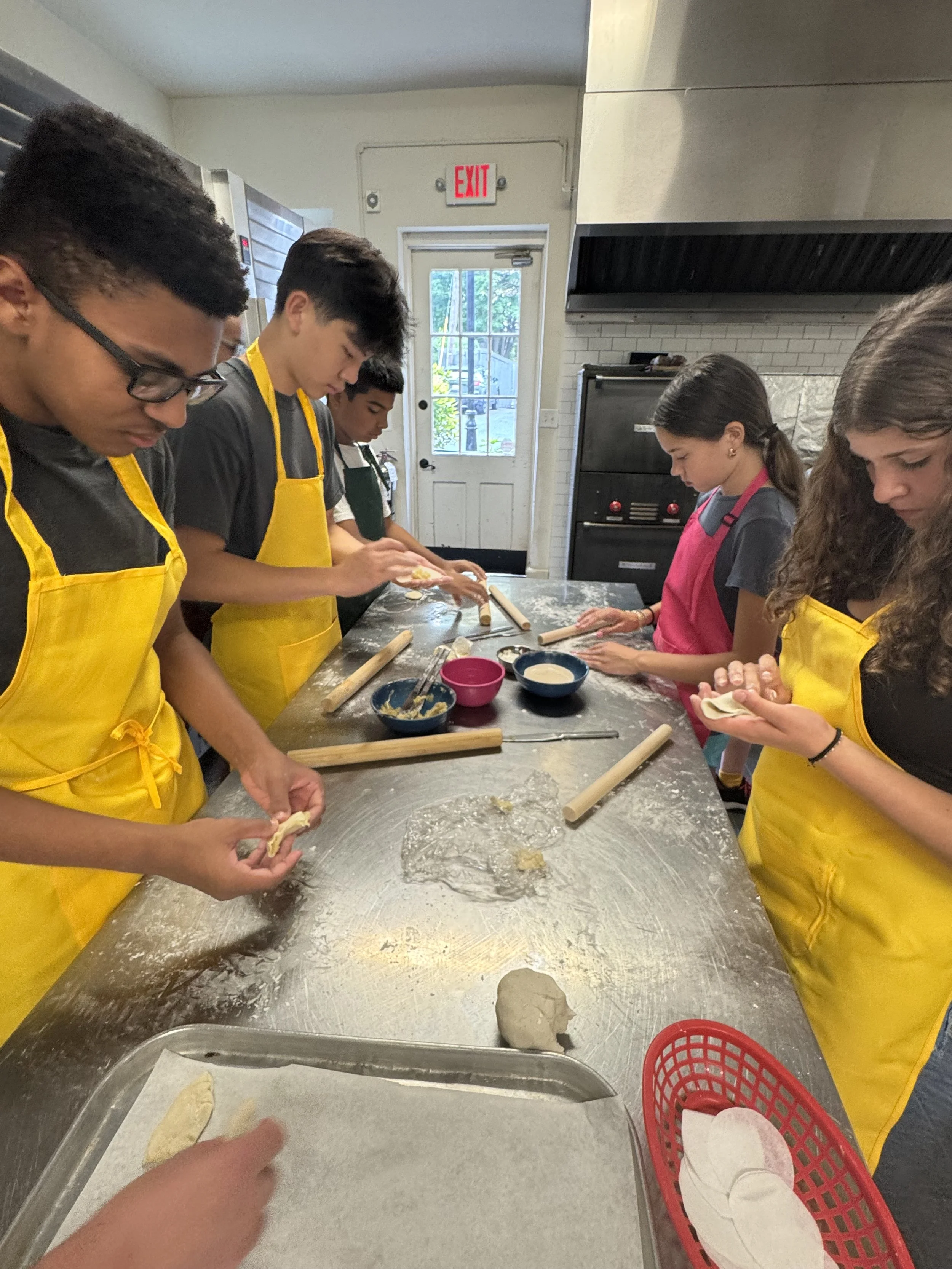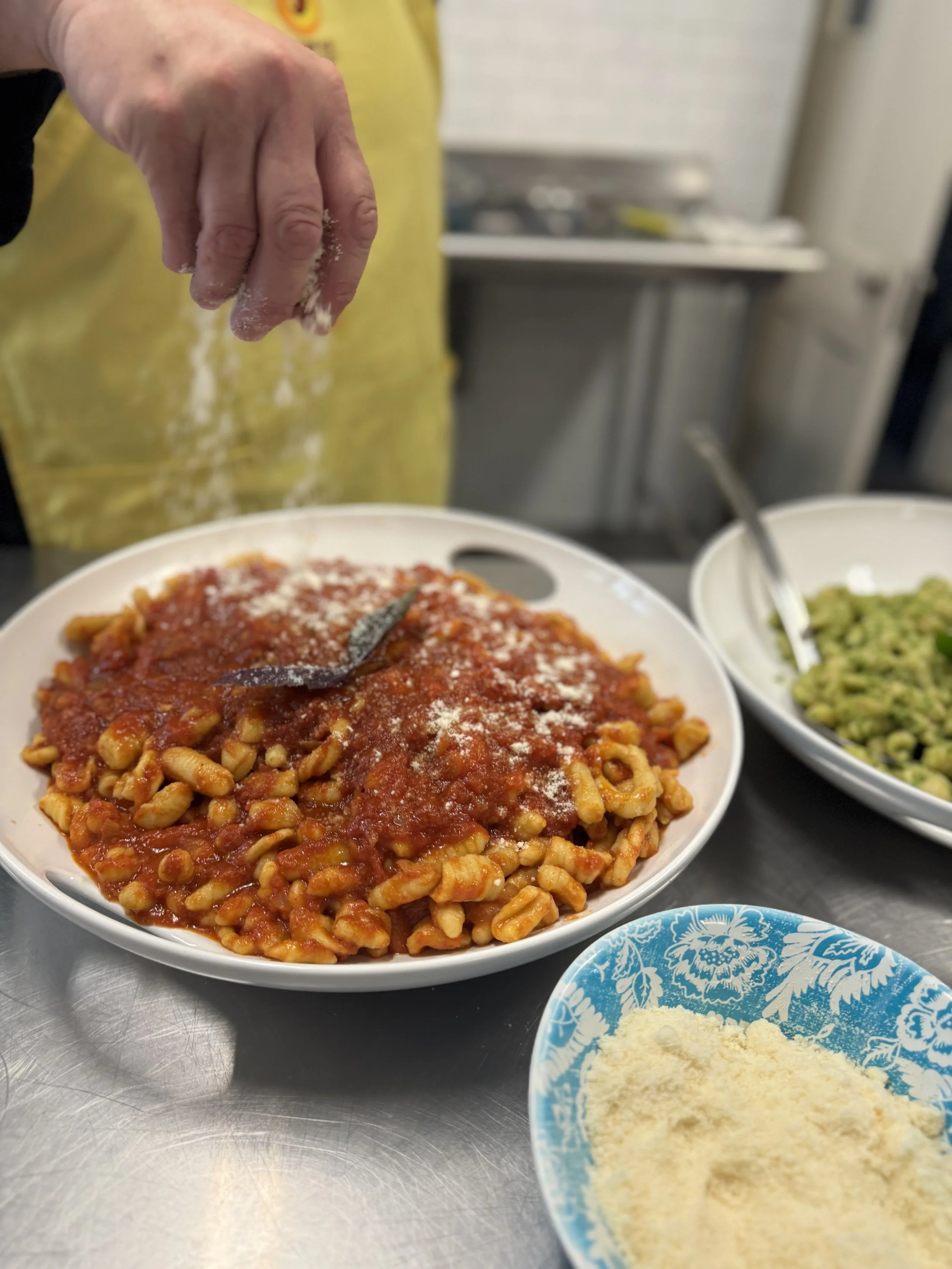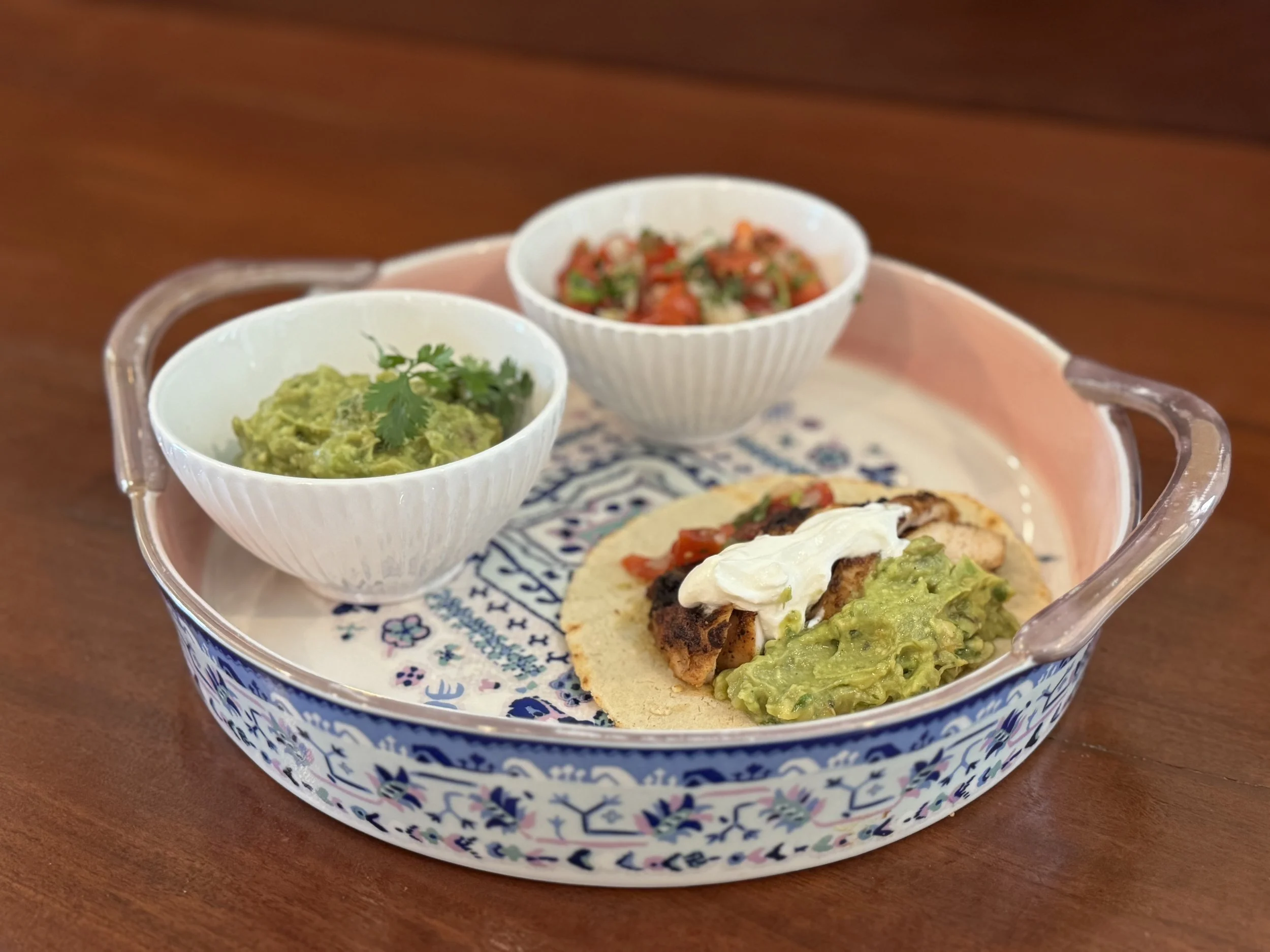During the second week of the Passion for Spices™ Cooking Camp, our Around the World tour began by introducing students to the underlying principles of Japanese food culture and practice. Following this context, our students applied the ideas practically by hand-folding chicken-and-vegetable gyoza and rolling California rolls on bamboo mats fully from scratch, using exclusively farm-to-table, sustainable ingredients. These hands-on exercises enabled them to apply the principles of precision and simplicity introduced earlier in our session discussions. In the afternoon, our students participated in an experiential learning workshop, working through the process of making dorayaki, a traditional Japanese pancake filled with red bean paste. Our students explored the techniques collaboratively—learning through observation, trial, and dialogue, experimenting with batter consistency and filling proportion. Day 1 concluded with a clear takeaway: Japanese cuisine exemplifies how thoughtful technique and simple ingredients can produce food that is both healthful and refined. As we move into Day 2, our students begin to engage more deeply with the cultural values and health philosophies embedded in the global food traditions we explore.
Our second day at Passion for Spices™ Cooking Camp brought students into the culinary world of the Mediterranean. Students began their hands-on work with a Mediterranean classic: falafel. Using soaked chickpeas, fresh parsley, cumin, cardamom, and other ingredients, they learned to form and fry crisp, golden patties from scratch. These were tucked into soft, freshly baked pita pockets, paired with a cool, tangy tzatziki made from Greek yogurt, cucumber, and garlic. They then made chicken souvlaki skewers, marinated with lime, mint, garlic, olive oil, and others. These skewers were then grilled to perfection, adding a protein-rich component that rounded out the meal. To go along with this, the students also made some delicious, soft pita bread. In the afternoon workshop, our focus shifted to spreads. Students created smooth, creamy hummus and muhammara dip, made with roasted red peppers, bread crumbs, onion, and more. This exploratory session emphasized texture, seasoning, and balance to achieve a harmonious result. By the end of Day 2, students had gained not only an appreciation for the nutritional wisdom of the Mediterranean but also a hands-on understanding of how modest, organic ingredients can come together to form a vibrant and satisfying table.
On Day 3, our journey took us to Italy—a country where regional, seasonal, and artisanal elements form the soul of its world-renowned cuisine. Students began the morning by making orecchiette from semolina dough, learning the thumb-press technique that gives this pasta its ear-like shape. These were paired with two classic sauces—slow-simmered tomato and a fragrant basil pesto—allowing students to explore the interplay between starch and sauce. Our afternoon was devoted to a focused pasta-making workshop, where students crafted fresh egg pasta dough from scratch, rolling and shaping it into tender ravioli filled with ricotta and spinach. They learned to knead by feel, gauge dough hydration, and seal the delicate parcels to avoid breakage during cooking. This hands-on session encouraged both individual creativity and group problem-solving, as students adapted to varying dough textures and cutter shapes. By the close of Day 3, students had immersed themselves in the rhythm of Italian cooking, where quality ingredients, practiced technique, and respect for tradition result in food that is both comforting and elevated.
Returning to North America, Day 4 spotlighted the layered, spice-forward cuisine of Mexico. Morning conversations focused on the vibrancy of fresh produce that exists in Mexican cuisine. We explored the historical and cultural journey of Mexican food, from Indigenous roots to regional specializations. Students began with the fundamentals: forming and pressing their own corn tortillas and preparing Mexican-style chicken with citrus and garlic. Salsa Mexicana offered a lesson in knife skills, as students finely diced tomatoes, onions, jalapeños, and cilantro to create a balanced, refreshing accompaniment. Our afternoon workshop shifted to something sweet—churros. Students prepared, piped, and fried the dough until golden, finishing them with cinnamon sugar. The process demanded precision in timing and temperature control while offering an opportunity for creativity through dipping sauces and shaping variations. By the end of the day, students came away with a deepened respect for how Mexican cuisine embraces boldness and balance, celebrating bright flavors, diverse textures, and cultural storytelling through every bite.
We concluded our global culinary journey with a deep dive into Indian cuisine, celebrated for its aromatic spices, layered techniques, and regional diversity. Morning discussions emphasized the cultural significance of masalas and flatbreads, along with the balance between creamy, spicy, and tangy flavor profiles that define Indian dishes. Students began their cooking session with soft, pillowy naan flatbread. They focused on the techniques of kneading, rising, and skillet-toasting to achieve the naan’s signature char and chewy texture. Next came Chicken Makhani, where students made a delicious sauce consisting of onion, tomatoes, and green chilies. The afternoon was dedicated to an immersive samosa workshop. Students rolled their own dough, created a spiced potato-and-pea filling, and learned to fold and seal the iconic triangular pastries. Emphasis was placed on texture and technique, from crimping edges to frying at the right temperature. As the day ended, students reflected on how Indian cuisine highlights the power of spice not just to flavor, but to heal, preserve, and tell stories. With this final session, our campers closed the week with a broadened palate and a new appreciation for the ways food connects us across continents and cultures.







